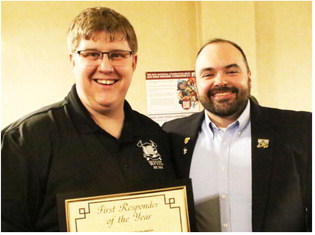Walleye Stocking Efforts On Fort Peck Completed
With the popular Fort Peck Governor's Cup Walleye Tournament coming up this weekend, anglers will be eager to know that the future of walleye in Fort Peck Reservoir looks bright.
Walleye stocking efforts on Fort Peck were completed last week and it turned out to be a very productive season. Favorable water temperatures during the stocking and rearing period, along with good plankton production, resulted in a near record number of fingerlings stocked out. As a result, 4.2 million fingerlings were released back into the reservoir.
Wait ... what? Walleye are cannibals?!?
Once walleye fry are released into the Fort Peck and Miles City rearing ponds (or into a certain waterbody), they immediately begin feeding on zooplankton. Walleye fry will continue feeding on zooplankton as they grow towards fingerling size, which is typically 1.5 to 2 inches long. After that, they will start switching to other food items if present, like aquatic macroinvertebrates and even other fish.
This mean it’s critical to monitor the timing of pond draining because cannibalism does occur during the pond-rearing phase. Longer rearing time will result in bigger fingerling walleye, but overall stocking numbers start to decrease. It’s a careful balancing act that hatchery personnel keep tabs on. Where do they go?
So, where do all these walleye fingerlings get released in Fort Peck Reservoir? Some walleye fingerlings get planted directly at a boat ramp. Others get transported by boats equipped with hauling tanks and oxygen to the numerous embayments (other accessible bays) throughout the reservoir. The multiple stocking sites ensures the newly planted fish have ample amount of room to grow, as opposed to stocking them at one location where they would have to compete for limited resources. Fort Peck Reservoir is a large water body with many miles of shoreline (1,520 miles) which make it difficult for fingerling walleye to navigate given their swimming ability is limited during their early stages. It should be noted that stocking efforts occur in the lower portion of the reservoir because netting surveys and studies indicate that upper portion of the reservoir (Big Dry and Missouri River) contribute to the fishery more than other portions of the reservoir.
Other Stocking Efforts
Both the Fort Peck and Miles City hatcheries also stocked several other ponds around the state of Montana with fingerlings as well. To see these sites and stocking numbers, please go to the “FishMT” tab on the fwp. mt.gov webpage and go to “stocking data.” These numbers will be updated in the next couple of weeks with the 2020 stocking efforts.

